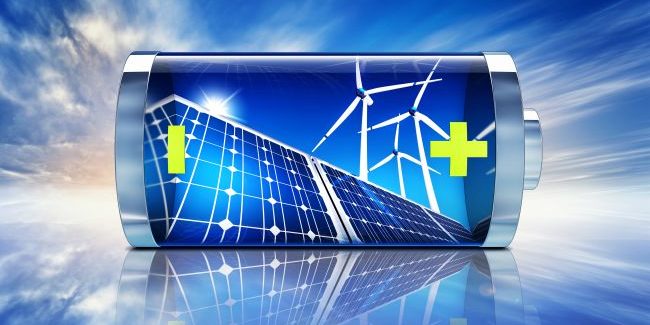By 2030, electrical systems consisting of 100% solar, wind and storage batteries could provide cheaper energy, up to 3 times more abundant than what is available today in the US and in the world's most populated areas.
To say it is a new report from RethinkX. Changes that could bankrupt coal, gas and nuclear power companies and dramatically reduce consumer costs.
What is RethinkX
RethinkX is an independent think tank. It analyzes and predicts the speed and extent of technology-driven perturbations and its implications in society. It produces unbiased, data-driven analysis that identifies the fundamental choices that need to be made by investors, business leaders, politicians and citizens.
The report
“Rethinking energy 2020-2030: 100% solar, wind and batteries is just the beginning”. This is the name of the report, which notes: a drastic reduction in costs in clean energy generation and storage technologies will drive a rapid and inevitable revolution in the sector.
A 100% storage system will have a much greater generation capacity than is currently used on most days. This will produce a huge amount of electricity at a marginal cost close to zero.
The authors of the report show that this “clean energy superpower” will enable new business models and create trillions of euros of new value.

100% solar, wind and storage batteries
“The implications of this clean electricity revolution are profound,” he says TonySeba, internationally renowned energy expert, co-founder and co-author of the RethinkX report.
“Not only can it solve some of society's most critical challenges, it will introduce hundreds of new business models and create industries that will collectively transform the global economy. If a system of 100% solar, wind and battery storage generates hyperabundant electricity at a marginal cost close to zero, the potential for creating new value is limitless. This is not an overcapacity problem. It's a powerful solution.”
Too much solar and wind power create problems? False.
“There's a misconception that too much solar and wind energy is a problem,” he said dr. Adam Dorr, co-author of the report.
“This is looking at the equation through the old lens of the fossil fuel system and fails to recognize the fundamentals of this revolution. Sunlight and wind are free, and it is irrational to reduce the near-cost-free clean energy we produce with them. As with other technological revolutions, it is a mistake to ask how the existing system will accommodate battery storage systems. Instead we must ask: “How can a new SWB-based energy system minimize costs and maximize benefits at all levels of society and the economy?”
The network as we know it will rapidly evolve into a larger, more flexible, diversified and capable system, just as the landline telephone network has evolved into the Internet.
Adam Dorr, co-author of the report

The method used
This is not a forecast, but a roadmap that shows what goals society should set itself, and what the costs and benefits would be.
the report analyzes three electrical systems for three US states: California, Texas and New England. Together they provide a plausible representation of the combined solar and wind resources in the US and the most populated regions globally.
The analysis shows that there is a fundamental cost trade-off between power generation and storage capacity. A trend that follows a convex cost function, which the authors call the “clean energy U-curve”. By optimizing this non-linear curve, 100% battery storage systems are the cheapest option for new power generation and, in many cases, cheaper than just the cost of operating existing nuclear and fossil fuel power plants.
They will generate excess electricity, or superpower, most days. In California, for example, the superpower of 309 terawatt hours of storage battery systems, albeit with lower costs, would be greater than the total existing electricity demand of 285 terawatt hours.
Networks with storage batteries: costs
The investment to build a 100% solar, wind and battery storage system for the USA? It would be less than $2000 trillion between now and 2030 and would provide a nationwide average electricity generation cost of less than 3 cents per kWh.
An average cost below that of continuing to operate existing coal or gas power plants.
The amount of superpower produced by systems at 100% solar, wind and battery storage would be huge. It would be so big and so cheap that it would displace up to half of all energy use from fossil fuels. In combination with electric vehicles it could eliminate all fossil fuel use and greenhouse gas emissions even in the road transport sector.
Reducing your carbon footprint by more than half in less than 10 years.
This report is the first in a series to examine the decisions needed now to maximize the extraordinary benefits of a new energy system.
“It's no longer a question of IF the battery storage energy revolution will happen, it's just a question of WHEN and WHERE,” he says James Arbib, co-founder of RethinkX.
“The timing and the social, economic, political and environmental stakes are high. The results depend on the choices made today.”.


